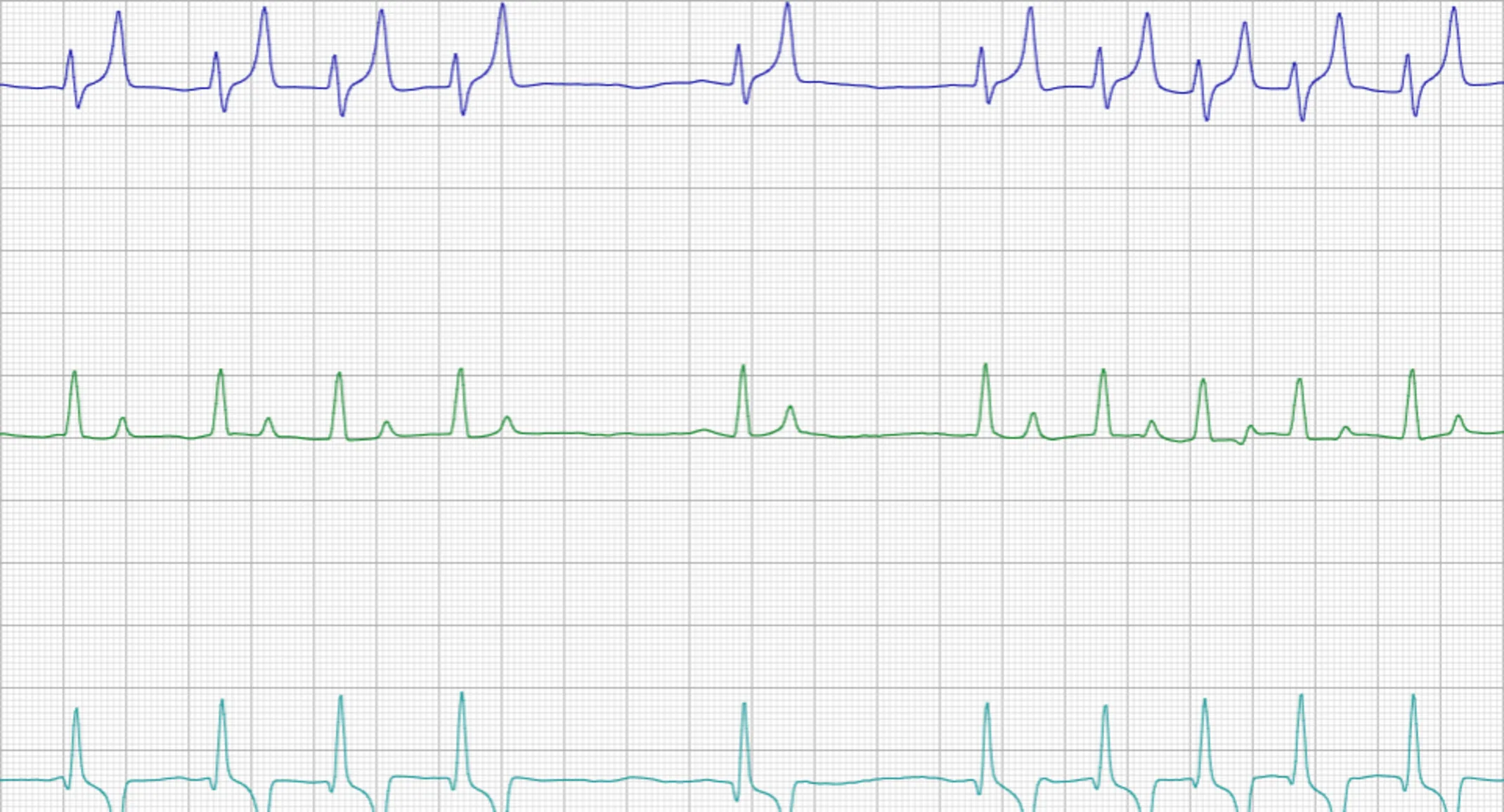What Is An Arrhyhmia?
Cardiology

Simply defined, an arrhythmia is an abnormal heart rhythm. This can include a heart rhythm that is too fast (tachycardia), too slow (bradycardia), or has early or late beats. Arrhythmias become clinically important because it can alter the hearts ability to pump blood to the body. Remember, the heart has two main components: the muscle (think of it as the plumbing of the heart) and the conduction system (the electrical system of the heart). The conduction system sends a signal that will determine how fast or slow the muscle will pump. If a dog or cat has frequent arrhythmias, it will decrease the pumping ability of the heart and lead to poor circulation to the body.
Symptoms
Many pets with arrhythmias have no overt symptoms and the abnormality is identified on physical examination or during a pre-anesthetic ECG. Severe arrhythmias, however, may lead to weakness, exercise intolerance, excessive panting at rest, collapse/fainting, or sudden passing.
Causes
Cardiac causes of arrhythmias can include diseases of the heart muscle (dilated cardiomyopathy, hypertrophic cardiomyopathy and arrhythmogenic right ventricular cardiomyopathy), congenital heart defects (subaortic stenosis), myocarditis (inflammation of the heart muscle), trauma to the heart muscle, and infiltration of the heart muscle (cancer cells). Some breeds are predisposed to arrhythmias including Schnauzers, Boxers, German Shepherd Dogs, and Doberman Pinchers.
Non-cardiac diseases can also lead to arrhythmias including gastric dilatation and volvulus, pancreatitis, sever anemia, endocrine diseases (hyperthyroidism, adrenal gland disorders), urinary obstruction, or toxin exposure (chocolate intoxication).
Diagnosis:
An arrhythmia can be identified on physical examination and confirmed with an electrocardiogram (ECG or EKG).
An ECG is a non-invasive test that allows veterinarians to evaluate the heart rate and rhythm. Small clips (electrodes) are placed on the legs and are used to make a recording that can be printed and analyzed.
A Holter monitor can also be used to evaluate your pet’s heart rhythm. This is a device that can be worn for 24 hours and will record your pet’s rhythm while they are home in their normal environment. This can help determine the frequency and severity of the arrhythmias. It is also common for certain breeds (Boxers and Doberman Pinchers) to have yearly Holter recordings as a screening test for cardiomyopathies.
Ancillary tests are usually done to try and identify a primary cause for the arrhythmia including an echocardiogram (ultrasound of the heart), abdominal ultrasound and complete bloodwork.
Treatment and Prognosis
The prognosis is variable depending on the type of arrhythmia and if there is an underlying heart condition, such as dilated cardiomyopathy. Some arrhythmias are benign and do not require treatment. If treatment is necessary, several oral medications are available to try and decrease the frequency of the abnormal beats. Advanced techniques, such as electrocardioversion or radiofrequency ablation, are also available but require specialized equipment and training.
